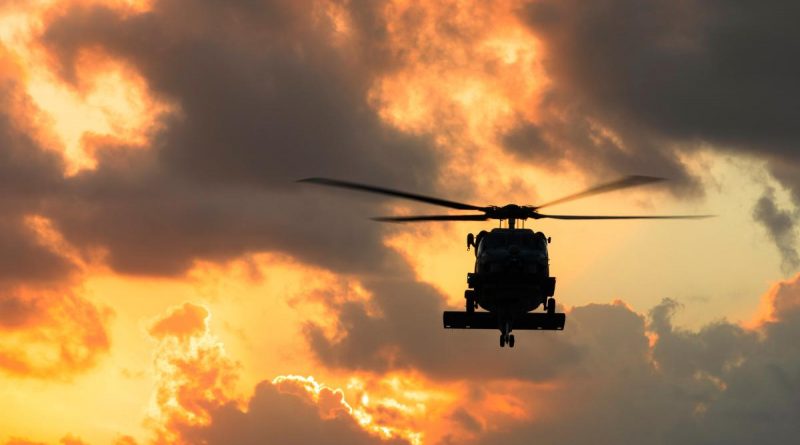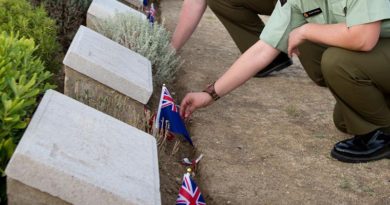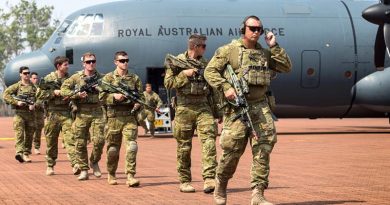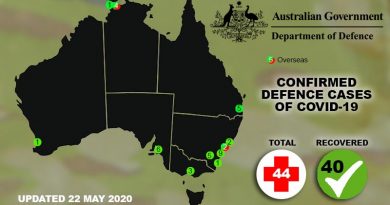Night training sharpens landing skills

Landing an MH-60 Romeo helicopter on a pitching and rolling warship at night requires regular intensive training and teamwork.
CAPTION: HMAS Hobart’s embarked MH-60R helicopter Carnage returns to the ship during flying operations in the North Pacific Ocean as part of a regional presence deployment. Story by Lieutenant Brendan Trembath. Photo by Leading Seaman Daniel Goodman.
To keep their skills sharp, the crew of HMAS Hobart’s embarked MH-60R Carnage conducted deck landing practice in the North Pacific Ocean during a regional presence deployment.
Navy pilot Lieutenant Rhiannon Thompson said it was a very dark night with no moon and strong winds.
“It was extremely challenging,” Lieutenant Thompson said.
“You quickly start to see why it is so important for pilots to maintain and refine those fundamental skills.”
The crew wore night vision goggles for the activity.
In the left hand seat was aviation warfare officer Sub-Lieutenant Alexander McLauchlan.

CAPTION: Leading Seaman Corey Mumberson conducts pre-flight checks on Carnage during flying operations. Photo by Leading Seaman Daniel Goodman.
On the approach to the warship, the pair scanned a bank of instruments to monitor information such as height, speed, heading and rate of descent, while also looking outside the aircraft.
“You need to be scanning physically with your eyes very quickly through all of those things to get that information into your head to digest it, to then translate that into your hands and feet to move the helicopter,” Lieutenant Thompson said.
Sub-Lieutenant McLauchlan’s main role involves mission command for surface and sub-surface warfare, however, equally important are the co-pilot duties to keep the aircraft safe.
“It’s satisfying when you get to do it,” Sub-Lieutenant McLauchlan said.
“I have to monitor the mission and make sure we achieve what we need to do, whether that is finding and deterring a submarine or surface vessel.”
Hobart’s embarked helicopter is maintained and marshalled by a team of 13 men and women.
During the recent deck landing practice session, aviation technician aircraft Leading Seaman Julijan Pavin was training as a flight deck marshaller, directing the aircrew where to land.
“It’s a good feeling when the aircraft comes into land because you are right in the centre of it,” Leading Seaman Pavin said.

CAPTION: Aviation technician Leading Seaman Julijan Pavin marshals Carnage. Photo by Leading Seaman Daniel Goodman.
.
.

.
.





